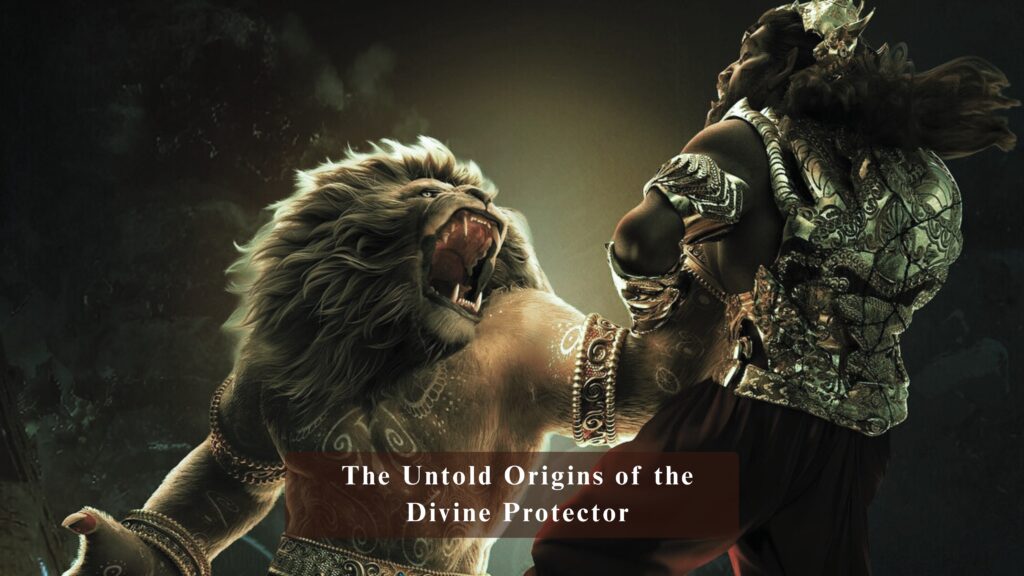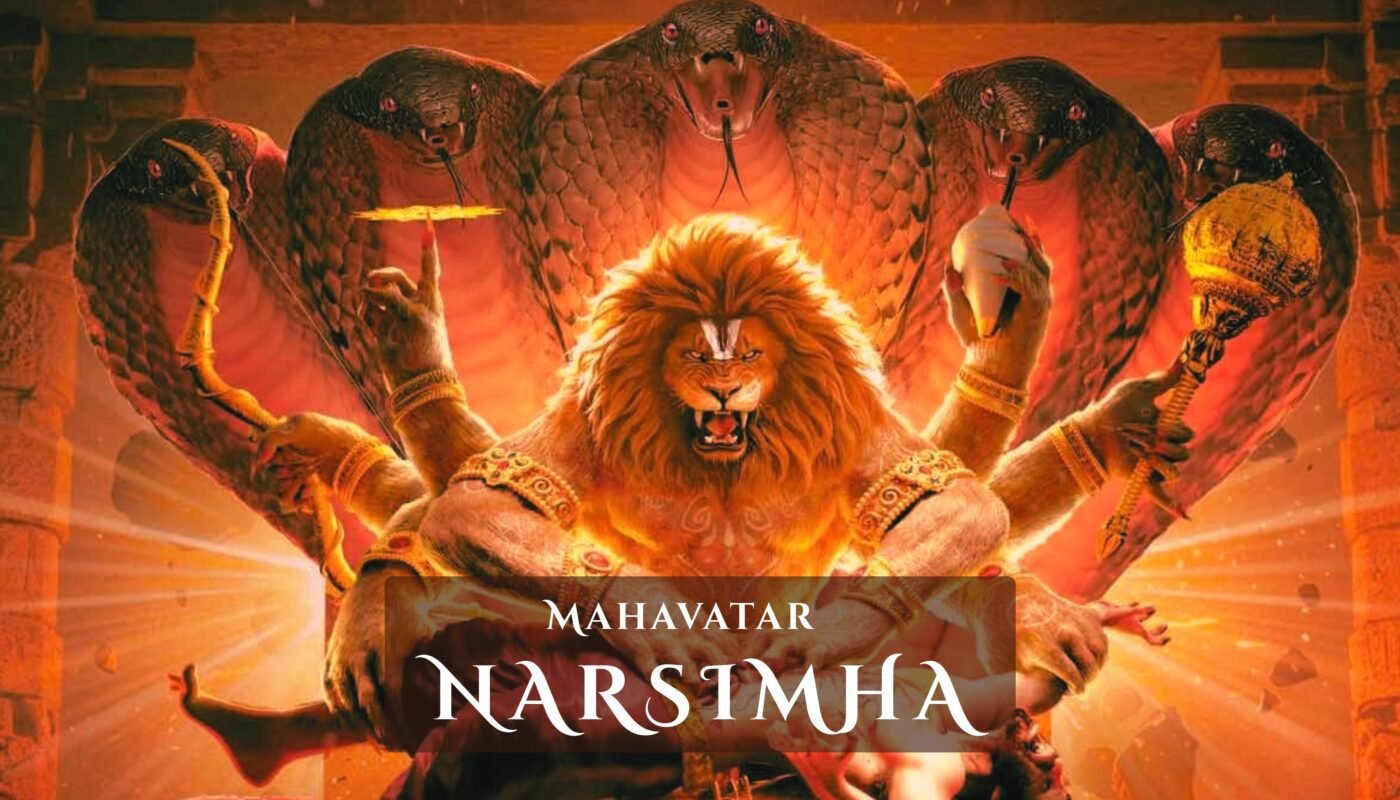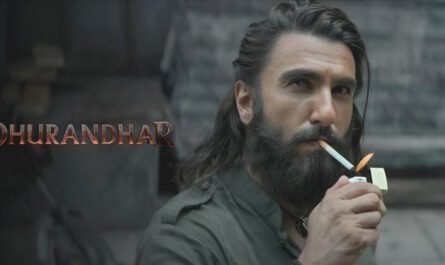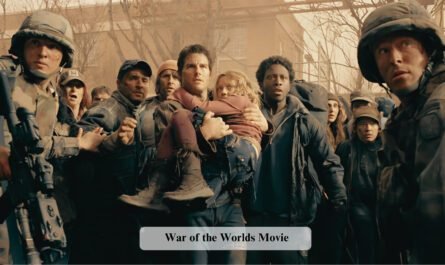When I walked out of the cinema, I realized my heartbeat was still racing. My chest felt tight, my breath uneven, and my mind refused to leave the world I had just witnessed. Mahavatar Narsimha: The Untold Origins of the Divine Protector wasn’t just a film—it was a transcendent experience. It reached into something primal and spiritual, leaving me with goosebumps that refused to fade.
This didn’t feel like watching a story—it felt like standing before a legend. It was as though I had briefly stepped out of the present and into a time when faith was more than belief—it was reality. Even as the lights came on, I sat frozen, my mind still echoing with that roar—the roar of Mahavatar Narsimha, a sound that seemed less like audio and more like the voice of justice tearing through existence itself.
In that moment, I knew: this wasn’t a movie you simply watch and forget. It’s one that demands to be lived, remembered, and shared.
The Shadowed Dawn – A Kingdom in Chains
From the first frame, the film transported me into a bleak, suffocating world. The screen opened to darkness, draped in eerie silence, broken only by a haunting voiceover that spoke of an empire ruled by tyranny and fear. The visuals were cold and heavy, perfectly capturing a kingdom strangled under its own ruler’s iron fist.
Then came Hiranyakashipu. His very name carried menace. He towered above the people not only in size but in cruelty. His arrogance dripped from every gesture, his laughter rumbling through grand halls like thunder before a storm. His cruelty wasn’t just about power—it was about erasing hope, stripping away even the smallest flicker of resistance.
But within this suffocating darkness stood a single point of light: Prahlad.
Prahlad – Faith Unshaken in the Face of Terror
Prahlad’s quiet defiance was breathtaking. His devotion wasn’t loud or dramatic—it was steady, like an eternal flame that couldn’t be extinguished. Every scene of him kneeling in prayer while danger loomed felt powerful enough to silence the entire theater.
One sequence etched itself into my memory: Prahlad, calm and composed, was dragged by soldiers toward a roaring fire pit. The flames flickered violently, the heat almost visible in waves. And yet, his expression didn’t waver. He closed his eyes, lips moving in prayer, untouched by fear.
When he emerged unscathed, the theater went silent. It wasn’t disbelief—it was awe. You could feel it in the air: this wasn’t merely resistance; it was faith embodied.
Hiranyakashipu – The Face of Arrogance

Opposite Prahlad’s serenity stood Hiranyakashipu, the embodiment of unchecked pride. His contempt for divinity was chilling. His voice thundered with mockery, his sneer daring the gods themselves to challenge him.
His most infamous line—“If your god is everywhere, is he here?”—sent chills down my spine. The theater collectively tensed. We all knew what was coming, yet the way it was staged built unbearable anticipation. It felt like standing under a stormy sky, waiting for lightning to strike.
The Throne Room – When Faith Split Stone
And then—everything changed.
The throne room, drenched in twilight shadows, felt sacred and ominous all at once. Hiranyakashipu stood mocking his son, every word dripping with venom. Prahlad, unfazed, whispered his prayer.
Then came silence. A silence so deep it felt physical.
Suddenly—the walls split apart.
The sound was seismic, rumbling like mountains tearing open. Stone shattered. Light burst through. And from within emerged a figure that seemed torn from cosmic memory itself: Mahavatar Narsimha.
The First Roar – A Sound Beyond Hearing
That roar.
It didn’t feel like sound. It was vibration, pure and raw. It rattled through my bones, shattering the boundary between screen and reality. Mahavatar Narsimha stood immense—half-man, half-lion, blazing like molten gold. His mane shimmered like fire, his claws glinted like blades of divine judgment. His eyes—two burning suns—pierced straight into the soul.
This wasn’t a visual effect. This was a presence. The chanting that rose behind him, the pounding drums—it all merged into something ritualistic. For a fleeting moment, the theater didn’t feel like a theater anymore. It felt like a temple.
The Reckoning – Justice in Motion
What followed was swift, brutal, and unforgettable. Narsimha didn’t fight like a warrior—he judged like a force of nature. Each strike carried weight not just of muscle but of cosmic inevitability. This wasn’t murder; it was restoration.
The imagery was hauntingly symbolic: crimson twilight spilling through shattered pillars, Hiranyakashipu’s defiance fading under unstoppable power, and finally, the moment of reckoning—the tearing of arrogance itself. The scene was visceral, yes, but it was far more spiritual than violent. It was catharsis made flesh.
The Shift – From Wrath to Tenderness
And then—silence. The fury ebbed.
Mahavatar Narsimha turned to Prahlad. His monstrous roar softened into stillness. He knelt, gathering the child into his arms. The claws that moments before had destroyed evil now stroked Prahlad’s head with paternal care.
This duality struck me hardest: raw destruction against injustice transforming seamlessly into boundless compassion. It was the essence of divine justice—fierce against darkness, gentle with the innocent.
Layers of Meaning – More Than a Tale
What makes Mahavatar Narsimha so powerful is that it’s not just myth—it’s metaphor. It speaks to an eternal truth: when darkness seems absolute, light rises.
Prahlad is devotion that doesn’t falter, proof that belief endures even under oppression. Hiranyakashipu is pride untethered, a cautionary tale that no throne, no ego, can stand forever. And Mahavatar Narsimha? He is the bridge—where faith meets justice, where wrath meets love.
This isn’t merely a story. It’s philosophy carved into legend.
Cinematic Brilliance – A Feast for Senses
Technically, the film was staggering. The CGI didn’t just show—it convinced. The glow of Narsimha’s mane, the fine detail of his claws, the eerie twilight—every frame felt painted.
The sound design elevated it to another plane. That roar vibrated not just in ears but in hearts. The layered chanting, drums, and deep resonance fused into an atmosphere that felt less like watching and more like worship.
And the score—an exquisite blend of traditional instruments and orchestral grandeur—never overwhelmed. It breathed life into every moment, heightening tension and release like a living pulse beneath the story.
The Quiet Dawn – Peace After the Storm
As the final sequence played—dawn breaking softly over a silent palace, Prahlad resting safely in Narsimha’s lap—I felt a strange calm. After the storm of fury and sound, the stillness felt almost sacred.
Walking out, I couldn’t shake it. The images lingered: the roar, the collapsing throne room, Prahlad’s unwavering gaze. Even hours later, I felt that strange comfort: the assurance that, when evil reigns too long, something greater answers.
Why It Stays With Me
This film wasn’t simply an adaptation—it was a reminder of why these tales live on. They speak to something timeless within us: the need for justice, the strength of belief, the hope that even in our darkest hour, help arrives.
Mahavatar Narsimha isn’t just a character. He’s a force. He’s the roar that cuts through silence, the protector who arrives when all else fails. Watching him wasn’t entertainment—it was an encounter with something older than memory itself.
Final Words – Beyond Cinema
Mahavatar Narsimha: The Untold Origins of the Divine Protector isn’t a movie—it’s a roar echoing across time. It’s the reminder that even in shadow, faith stands tall, and when faith calls, justice answers.
I can still see it when I close my eyes: the twilight sky breaking, walls splitting, that divine roar reverberating through my soul. Rarely does cinema stop being cinema and become something else entirely.




